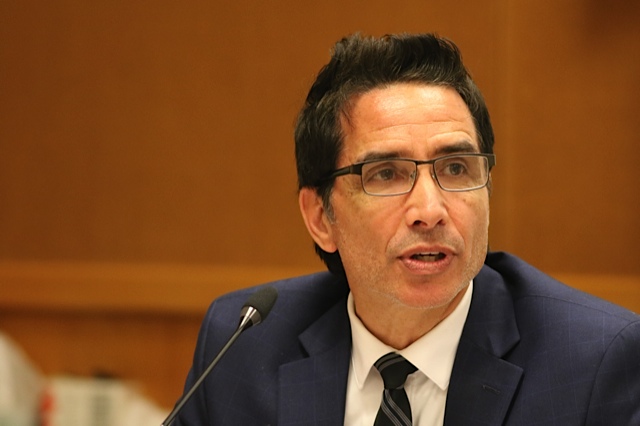Princeton Public Schools administrators are pressing ahead with a $129.8 million bond referendum this fall, but they could not say this week what its full impact will be on future school budgets.
For the fiscal year starting July 1, the district’s budget will be $98 million, an amount to run the schools, pay employee salaries and meet other financial obligations.
Superintendent of Schools Stephen C. Cochrane was unable this week to say what the budget would grow to in future years, assuming voters pass the bond referendum on Oct. 2.
“I haven’t done that analysis yet and that would vary on a number of factors,” Cochrane said on May 16. “But we’ve been upfront with people that there will be some additional operating cost for a new school.”
For $39.9 million, the district intends to build an 87,000-square-foot school for fifth and sixth-graders, projected to open in the fall of 2020 at the site of the old Valley Road School. The district has said it expects to spend about $1.5 million for about 22 new employees at the school.
“It does not include fifth and sixth grade teachers who are already employed,” Cochrane said on May 17. “But it does include new staff ranging from principal to nurse to counselor to child study team members to special area teachers to custodians and building monitors.”
Board of Education member Dafna Kendal, chairwoman of the facilities committee, said on May 17 that she envisioned no “significant” new operating costs due to the referendum, aside from those associated with the new school. She said the district might have to hire some additional staff, regardless of whether it was having a referendum, to meet rising enrollment.
A recent demographic report forecast student population topping 4,000 students in 2021 and exceeding 4,800 students in 2026. The district’s enrollment was 3,440 students in 2012, the same report showed.
Kendal also pointed to expected financial savings by switching to more energy efficient lighting and heating and cooling units, which are part of the referendum.
“The referendum includes energy savings equipment at all buildings so that, too, will be factored positively into our operating expenses,” Cochrane said.
District administrators are also looking to add more classroom space at Princeton High School, which is over its student capacity.
“Because PHS will be expanding internally, almost all new staff and associated expenses will be tied to increases in enrollment, not to expansion of space,” Cochrane said. “The increase in space as well as the increase in students may require the hiring of additional custodians for PHS.”
Board President Patrick Sullivan said on May 16 that school districts, in their budget, have to stay within the state mandated cap of 2 percent, but he said there are waivers for health care costs and enrollment growth.
He said district administrators would “have to make our budget fit within the constraints of the law.”
On a separate front, school district administrators had been looking to appear before the municipal Planning Board on May 17 to present their projects for the referendum, but because the board and the Princeton Council were scheduled to have a joint meeting that night, the district will have to wait. No date has been scheduled.
“We’ll be talking to them shortly, I’d say,” Sullivan said.
“With most of the sites, there are going to be planning issues and impacts the municipality is going to want to discuss with the schools,” Mayor Liz Lempert said on May 17.
She said those issues run the gamut from traffic impacts to parking.

